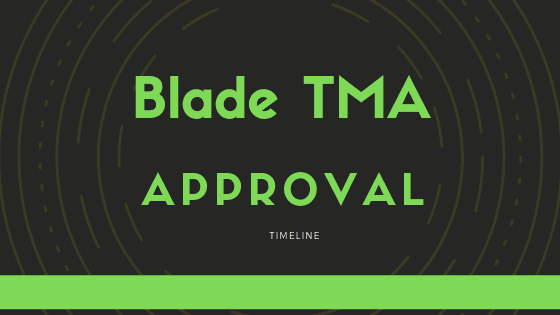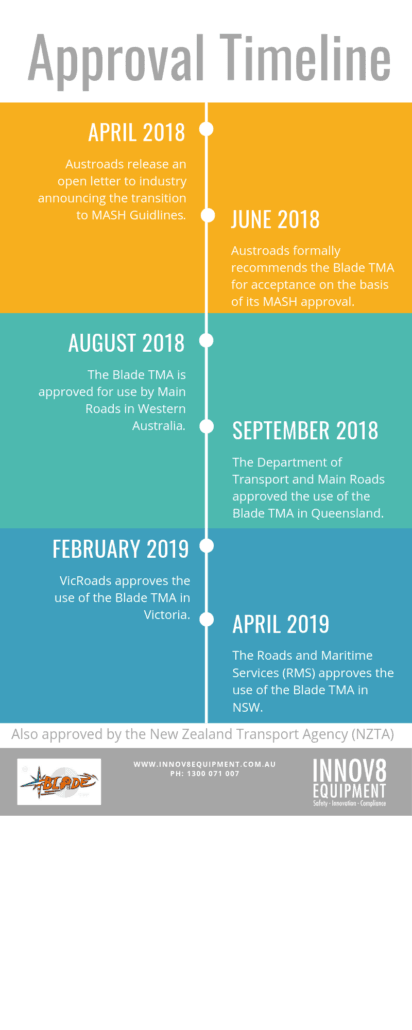The history of BLADE approval and important industry changes
Imagine, being behind the wheel of a stationary TMA truck and looking in your rear vision camera to see headlights of a large truck driving straight towards you at high speed, with no indication of slowing down or changing lanes. While it is the purpose of the TMA truck to absorb these kinds of impacts, even drivers who have previously experienced a collision will feel the inevitable rush of adrenaline while bracing for potential impact.
It’s in this moment that drivers are relying solely on the quality of their equipment to avoid injury. Do they know that they’ll be as safe as possible?
All TMA’s used in Australia are required to meet certain safety standards. In an open letter distributed by Austroads on 23 April 2018, they announced a transition from NCHRP-350 to the Manual for Assessing Safety Hardware (MASH). Although this is not an indication that all TMA products are built the same way, or that every MASH approved unit has been tested to exactly the same degree.
Since its introduction to the Australian market in late 2016, the Blade TMA has been establishing itself as a comfortable and reliable unit which has proven, real-life experience absorbing high speed crashes. The most recent example was a crash on the Hume Highway in NSW where a fully loaded vehicle transport truck was hurtling toward the crash cushion when it veered at the last second, clipping the edge of the BLADE. Luckily, the Blade TMA helped avoid serious injury and damage, and both drivers emerged from their trucks unassisted.
Over the past 14 months, the Blade TMA has been recommended for acceptance by the Austroads Safety Barrier Assessment Panel (ASBAP), and approved in four Australian states.
Discover more about the Blade TMA now and get in touch if you have any questions – sales@www.innov8equipment.com.au or call 1300 071 007.


